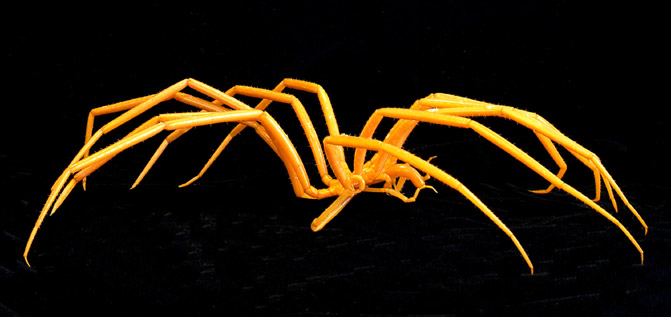 Giant sea spider
Giant sea spider
TLF ID R6865
This is a colour photograph of a giant sea spider ('Dodecolopoda mawsoni') set against a black background. This is a preserved specimen that has lost its original red colouration and faded to orange due to the preserving liquid. The long legs, small body and bright colouration are displayed in the image.
